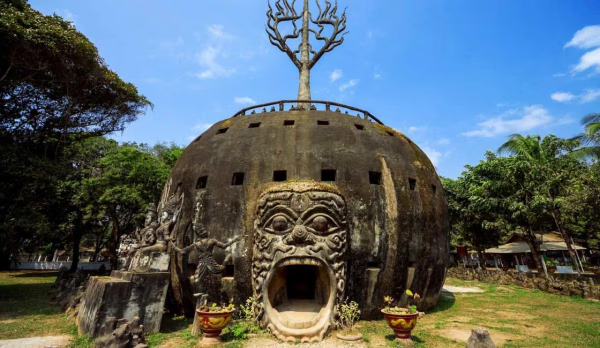
Buddha Park
Buddha Park
Published 2024.08.07 by reafla powered by REAFLA
ອະທິບາຍ
Buddha Park, also known as Xieng Khuan (as well as other variations of the spelling), is a sculpture park 25 km southeast from Vientiane, Laos in a meadow by the Mekong River.[1][2] Although it is not a temple (Wat), it may be referred to as Wat Xieng Khuan (Lao: ວັດຊຽງຄວນ;Thai: วัดเซียงควน) since it contains numerous religious images.[3] The name Xieng Khuan means Spirit City.[2] The park contains over 200 Hindu and Buddhist statues.[4] The socialist government operates Buddha Park as a tourist attraction and public park.
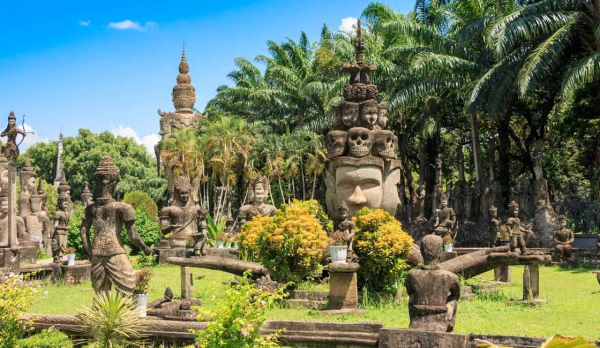
Buddha Park, also known as Xieng Khuan (as well as other variations of the spelling), is a sculpture park 25 km southeast from Vientiane, Laos in a meadow by the Mekong River.[1][2] Although it is not a temple (Wat), it may be referred to as Wat Xieng Khuan (Lao: ວັດຊຽງຄວນ;Thai: วัดเซียงควน) since it contains numerous religious images.[3] The name Xieng Khuan means Spirit City.[2] The park contains over 200 Hindu and Buddhist statues.[4] The socialist government operates Buddha Park as a tourist attraction and public park.
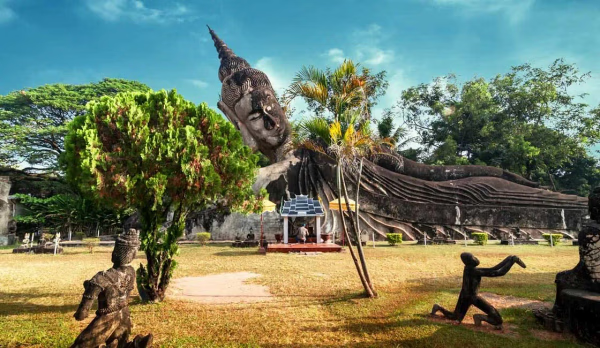
The park was started in 1958 by Luang Pu (Venerable Grandfather) Bunleua Sulilat.[2] Luang Pu Bunleua Sulilat was a priest-shaman who integrated Hinduism and Buddhism.[2] His unique perspective was influenced by a Hindu rishi under whom he studied in Vietnam.[5] After the revolution in 1975, anxious about the repercussions of the rule of Pathet Lao, he fled from Laos to Thailand where he built another sculpture park, Sala Keoku in Nong Khai.[1][5] Both parks are located right next to the Thai-Lao border (Mekong river), only a few kilometres apart from each other, and the tallest structures of the Buddha Park can actually be seen from the Thai side of Mekong.
The statues are made of reinforced concrete and are ornate, and sometimes bizarre, in design.[5] The statues appear to be centuries old, though they are not. There are sculptures of humans, gods, animals, and demons.[4] There are numerous sculptures of Buddha, characters of Buddhist beliefs like Avalokiteśvara, and characters of Hindu lore, including Shiva, Vishnu, and Arjuna.[2] These sculptures were presumably cast by unskilled workers under the supervision of Luang Pu Bunleua Sulilat.[2] One notable sculpture resembles a giant pumpkin.[1] It has three stories representing three levels - Hell, Earth and Heaven.[1] Visitors can enter through an opening which is a mouth of a 3-metre-tall demon head (9.8 ft) and climb staircases from hell to heaven.[4] Each story contains sculptures depicting the level. At the top, there is a vantage point where the entire park is visible.[4] Another sculpture, an enormous 40-metre-long (130 ft) reclining Buddha, is also a park attraction.
ປະເພດກ່ຽວຂ້ອງ
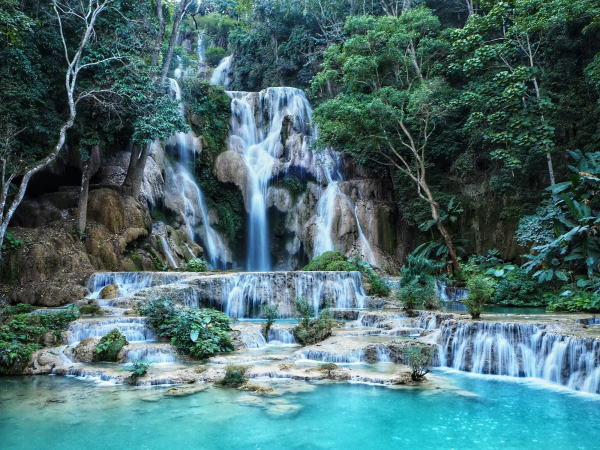
Natural History
Kuang Si Waterfall: A Natural Wonder of Laos
We explore the beauty of Kuang Si Waterfall in Laos and the experiences it offers to travelers who visit it.
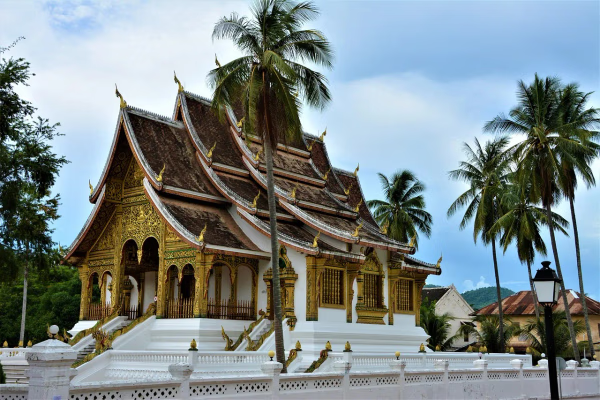
Natural History
Luang Prabang
Luang Phabang, (Lao: ຫລວງພະບາງ/ຫຼວງພະບາງ) or Louangphabang (pronounced [lǔaŋ pʰa.bàːŋ]), commonly transliterated into Western languages from the pre-1975 Lao spelling ຫຼວງພຣະບາງ (ຣ = silent r) as Luang Prabang, literally meaning "Royal Buddha Image", is a city in north central Laos, consisting of 58 adjacent villages, of which 33 comprise the UNESCO Town of Luang Prabang World Heritage Site. It was listed in 1995 for unique and "remarkably" well preserved architectural, religious and cultural heritage, a blend of the rural and urban developments over several centuries, including the French colonial influences during the 19th and 20th centuries.
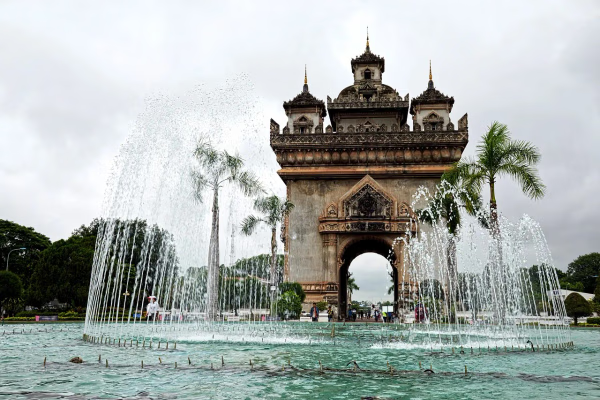
Natural History
Vientiane
Vientiane (/viˌɛntiˈɑːn/ vee-EN-tee-AHN,[3] French: [vjɛ̃tjan]; Lao: ວຽງຈັນ, Viangchan, pronounced [wía̯ŋ t͡ɕàn]) is the capital and largest city of Laos. Comprising the five urban districts of Vientiane Prefecture, the city is located on the banks of the Mekong, right at the border with Thailand. Vientiane was the administrative capital during French rule and, due to economic growth in recent times, is now the economic center of Laos. The city had a population of 1,001,477 as of the 2023 Census. Vientiane is the home of the most significant national monuments such as Pha That Luang, a national symbol of Laos and an icon of Buddhism in Laos. Other significant Buddhist temples can be found there as well, such as Haw Phra Kaew, which formerly housed the Emerald Buddha. The city hosted the 25th Southeast Asian Games in December 2009, celebrating 50 years of the games.